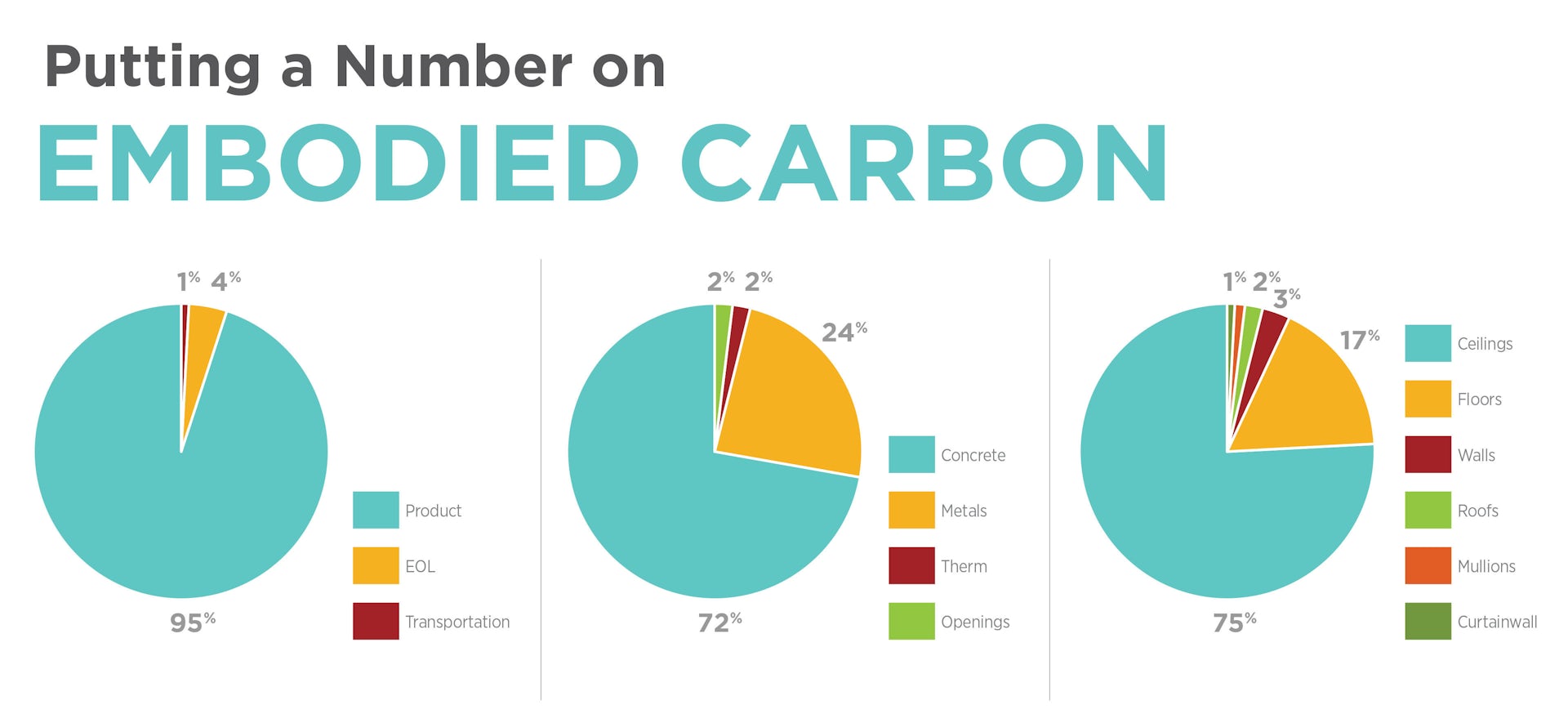While the fight against greenhouse gas emissions often focuses on fossil fuel use, embodied carbon in building materials is responsible for 11 percent of global emissions, according to data from the United Nations.
In recent years, new tools have been developed to better understand the embodied carbon in the life cycle of a project, helping designers and building owners make informed decisions. For building owners, there are several advantages to the data, beyond evaluating the environmental impact. For one, if LEED certification is a goal, the U.S. Green Building Council has incorporated life-cycle assessments into its LEED Green Building Rating System. In addition, making informed choices on materials can lower maintenance and operational costs over the building’s life.
LPAred, LPA’s in-house research department, primarily uses two tools to help evaluate embodied carbon—the Athena Impact Estimator, a free tool developed by the nonprofit Athena Sustainable Materials Institute, and Tally, a fee-based application.
Both applications have distinct advantages, says Isik Goren, a LEED Green Associate with LPA. Athena’s software is easy to use and has been in the market for a long time, and it was developed closely with government agencies and researchers. Tally is newer than Athena and requires an annual fee, but leverages BIM as it plugs into Revit software, allowing architects and engineers to directly link the Revit model with the Tally add-in. The databases of both applications have grown in recent years, making it easier to generate detailed assessments of materials and construction techniques, Goren says.
Putting a Number on Embodied Carbon
Analyzing the carbon impact of a project doesn’t have to be a guessing game. Research tools can provide actionable data.

“As these programs increase their material library and continuously do data updates, the life-cycle assessment tools will become more accurate,” Goren says.
Turning the software data into actionable results requires evaluation of building products and their origins. For example, wood is inherently a more sustainable product, but an analysis is needed to ensure it is certified wood from sustainable forests. Each software program has its limitations and can provide only estimates.
The key is to start the life-cycle analysis early in the design process, Goren says. “It’s never too late to do it, but if you do the analysis early in the process there is an opportunity to develop cost-effective strategies to decrease the embodied carbon,” she says. Ideally, designers want to improve the design throughout the process to take full advantage of the tools’ capabilities.
Conducting life-cycle assessment has played a role in decisions on several recent projects, Goren says. For example, one recent design included an assessment of the different materials used for the façade, resulting in the selection of a more durable material. In another project, fly ash was substituted in the concrete, creating a significant benefit in lowering the carbon emissions throughout the building.
“Making improvements on a small scale, such as changing the mixture of the product with recycled materials, can actually create significant improvement and overall impact of a design,” Goren says.
At this point, these tools are primarily used by a small number of firms, but that is changing. Used correctly, they can play an important role in all aspects of design.
“It’s about resiliency and sustainability on a bigger scale and how informed design decisions can actually reduce your impact on the environment,” Goren says.




